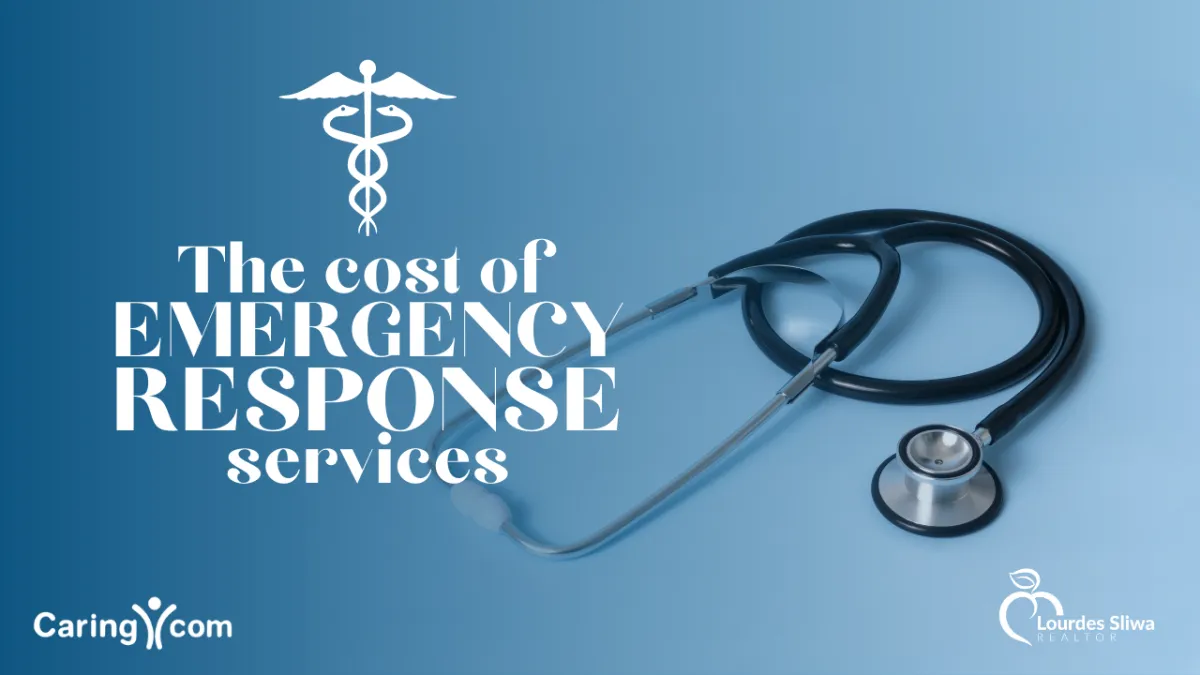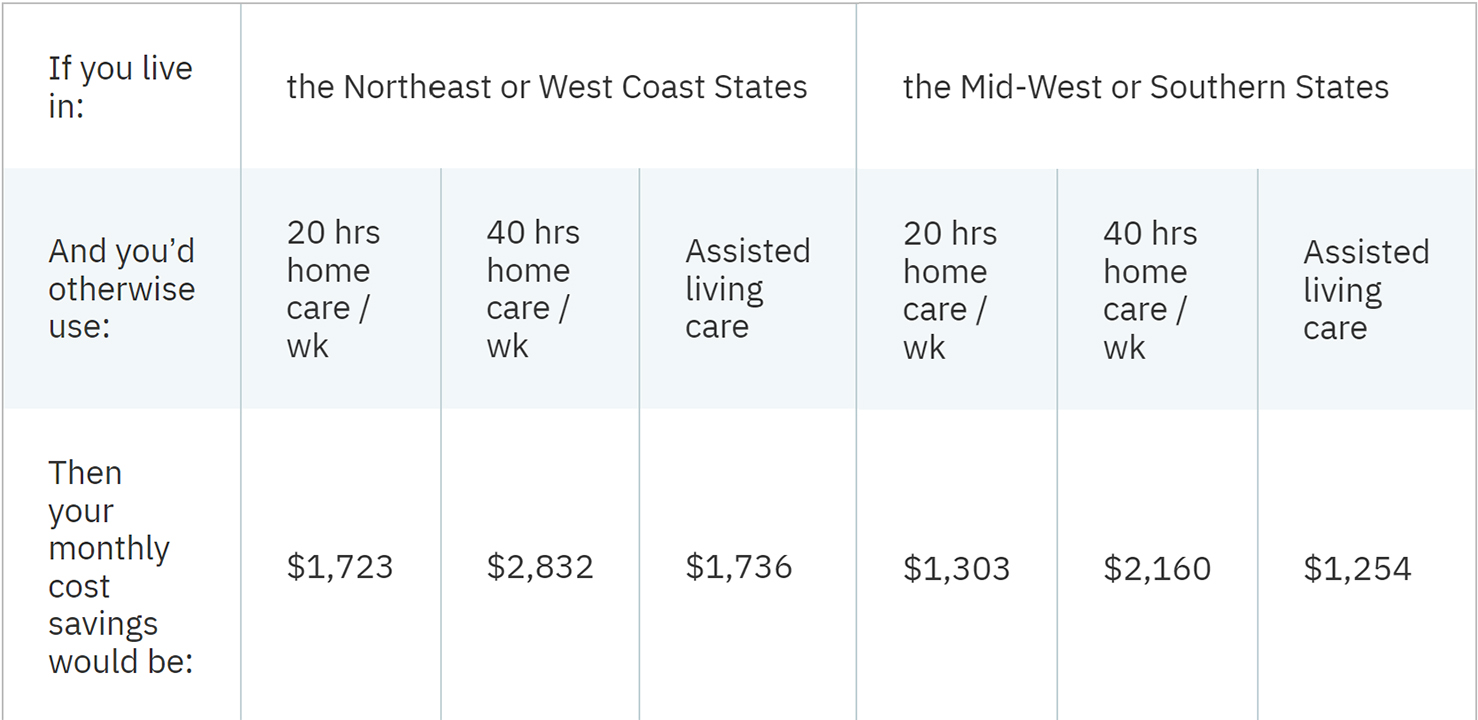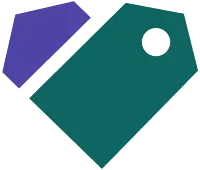

Reach out!
Want to get a free custom market proposal?
CLICK HERE to request a FREE analysis on your home!.
Space Coast Real Estate Blog
Stay in the loop about the latest Real Estate news and advice for the historic Florida Space Coast!
Welcome to our real estate blog, dedicated to exploring Florida's beautiful Space Coast and the ever-changing world of real estate.
Here, we will take a deep dive into the local market, providing valuable insights on everything from home buying and selling, to market trends, home décor and things to do on the Space Coast.
Whether you're a buyer, a seller or simply curious about real estate and what the Space Coast has to offer our blog is for you.
So, come along with us as we explore the exciting world of real estate on Florida's Space Coast.

Medical Alerts & Personal Emergency Response Services Costs
Originally published in PayingforSeniorCare.com: https://www.payingforseniorcare.com/financial-assistance/pers-safetymonitoring
Reviewed/Updated: October 25, 2020
Description
Personal safety monitors are devices that monitor the safety and status of elderly individuals in their homes, residences, or while on the move. And they alert emergency responders and family members should a crisis occur. These devices enable individuals who would otherwise require care or supervision to remain safely in their homes alone.
Personal safety monitors in their most basic form are called Personal Emergency Response Services (PERS). These are “life alert” type products in which the user wears a pendant through which they can communicate if, for example, they have fallen and need assistance. However, this is an outdated view of safety monitoring. Many products available today monitor location, movement, specific activities, and even vital signs. Advanced systems can impressively shut-off unattended stoves. These devices communicate all the information instantly to anyone who requires it through multiple channels, such as phone, text, web, and email.
Personal safety monitoring can dramatically lower the cost of care, decrease caregiver anxiety, prevent Alzheimer’s wandering, and increase the quality of life for elderly persons who either live alone or spend a considerable amount of time alone. This is perhaps the most innovative and promising area of aging care technology.
Many Names, One Product
– Personal safety monitors are referred to by many different names which can cause confusion. These include Assistance Call Systems, Medical Emergency Response Systems, Personal Emergency Response Services (PERS), Fall Monitoring, Wander Management, Life Alert, Remote Monitoring, Medical Alert, Telemonitoring, Medical Call and other specific product names chosen by the companies that sell them.
Helpful Resources
How They Work
In order to understand if a personal safety monitor system is appropriate for your loved one and how much it can lower the cost of care, it is helpful to first understand how these systems work. To do so, one must recognize that there is a large diversity in both the range of services available and their costs.
Normally, these systems have 3 components. The first component collects information about the individual, the second component receives and organizes the information, and the third component communicates the information to the appropriate parties. A simple example of the first component is a pendant worn by the individual that senses if he/she has fallen. The pendant communicates to the second component, which is a call center. At the call center, they determine if help is needed and alert the third component, a family member, caregiver, or emergency response team.
Collecting Information – information about the elderly individual’s current status is collected many ways. The simplest of which is a pendant or watch with a call button through which verbal communication occurs. More robust personal safety systems use a series of small sensors located throughout a residence. These can include motion sensors, falls monitors, sleep monitors, sensors which monitor doors and cabinets being opened, movement from a chair, and bathroom usage. Add-on products can gather information on a person’s vital signs and can assist with medication management.
Analyzing Information – all the collected information is instantly relayed to a central location. This might be a small box located in the home or a call center computer. Relaying the information can happen through phone lines. But more often it is done through built in cellular connections or through a home’s Internet connection. Once centralized, the information is quickly analyzed either by humans on the phone, humans looking at a computer, or by software programs searching the information for any abnormal activities. More robust systems use both people and computers to analyze the information.
Communicating Information (Taking Action) – information is collected, relayed and analyzed in seconds. Critical information is immediately communicated to emergency response teams, family members, and caregivers. Persons can be notified by phone, email, or text message. Non-critical information and trending data is published to password-protected websites. There, family members and health care providers can review the information at their convenience. This also enables them to determine if different types of care or medical treatments are necessary.
Costs & Pricing Structures
Personal safety monitors use one of three pricing models: (1) One-time equipment purchase. (2) Monthly service fee or 3) start up / equipment fee plus monthly service. The first model is rarely used. It is much more common to have a flat monthly fee, which incorporates the rental of the monitoring equipment or for the user to buy the equipment outright and pay a lower monthly fee.
Service Type: Basic Service
Description: Wearable pendant to a call center for emergency response
Cost: $25 – $50 / month
Service Type: Mid Range
Description: Pendant / watch with automated fall detection, call center, emergency response, family notification
Cost: $30 – $60 / month
Service Type: High End
Description: Wearable device, multiple in-home sensors, two-way communication, online reporting, emergency response, multi-party notification and add-ons
Cost: $500 – $1000 startup and $50 – $100 / month
Payment Options and Financial Help
Financial assistance is available to help pay for home safety monitoring and PERS devices for the elderly. A variety of different sources exist but not all options are available to all families.
Did You Know?
Seniors and their family members are eligible for free quotes for PERS devices including ones with fall detection. Start here.
Medicare and Private Health Insurance
Does Medicare pay for medical alert services? This is almost everyone’s first question. Unfortunately, the cost savings potential of these services has yet to be recognized by original Medicare. Original Medicare, Medicare supplemental insurance (Medigap), and most private health insurance plans do not cover PERS, Medical Alert devices, or any other form of personal safety monitoring for seniors. However, April 2, 2018, the Centers for Medicare and Medicaid Services (CMS) made strides when they announced they are allowing Medicare Advantage, also called Medicare Part C, providers to expand supplemental benefits to include healthcare benefits beginning in 2019. The term “healthcare benefits” is loosely defined, but must be deemed medically necessary. This includes items and services for prevention, diagnosis, and treatment of sicknesses and injuries. Based on the loose guidance about what can and cannot be considered a health related supplemental benefit, it is our interpretation that some Medicare Advantage providers in some states will pay for medical alert devices. Please note that Medicare Advantage plans differ based on the state and insurance provider. So it is important to compare plan benefits to see if this benefit is included.
Non Medicaid State Assistance
Most states have financial assistance programs available to elderly, fixed income residents that do not qualify for Medicaid. These programs are intended to help seniors remain in their homes. Therefore, some of them provide financial help for electronic, in-home safety monitoring systems. Some of these states explicitly mention their coverage of “Personal Emergency Response Services.” And other states express support for “assistive technology,” which could be interpreted to include PERS.
As of 2019, our research shows non-Medicaid programs in 31 states are offering coverage of PERS. It should be noted that in some states there is more than one program offering coverage. Click on the state name below for program information.
States with PERS Coverage
Alaska
Arizona
Colorado
Connecticut
Florida
Georgia
Hawaii
Illinois
Indiana
Iowa
Kentucky
Maine
Maryland
Massachusetts
Minnesota
Nebraska
Nevada
New Jersey
New York
North Carolina
North Dakota
Nevada
Ohio
Pennsylvania
Rhode Island
South Dakota
Tennessee
Texas
Utah
Washington
Wisconsin
Wyoming
Veterans’ Options
Veterans have two different options for financial assistance for medical alerts. Although neither of these programs are specifically intended for this purpose. Veterans Directed Home and Community Based Services provide veterans with a care budget and the flexibility to use that budget as they best see fit to help avoid nursing home placement. As home monitoring clearly contributes toward that goal, Medical Alert / PERS would be considered an eligible expense. The second option is the veteran’s pension benefits known as Aid and Attendance and Homebound. These benefits are intended for veterans or their surviving spouses who require assistance with the activities of daily living and / or are housebound. Use of the cash assistance is at the discretion of the beneficiary or their caregivers / family members. Therefore it can be used to pay for home safety monitoring.
Tax Deductibility
The question of whether Medical Alert / PERS devices and services are tax deductible is open to some interpretation. However, the consensus (though not necessarily an “overwhelming consensus”) is that PERS / Medical Alerts can be considered medical expenses and are, therefore, deductible. As other assistive technology and capital expenses for home modifications are deductible, a strong case can be made for the deductibility of Medical Alert services. The actual tax code makes no mention either for or against PERS devices.
Cost Savings
Making a direct cost comparison between personal safety monitoring and human provided care is not entirely fair, as human care providers give assistance with medication management and offer companionship. While there are technical solutions for medication management and companionship, personal safety monitoring should best be thought of as a way to reduce the personal care hours an individual requires, not as a replacement.
It is estimated that using a personal safety monitoring services or PERS can save families between $1,200 – $2,800 / month in personal care costs.
How much can your family save on the cost of care by using a personal safety monitoring system for your loved one at home? This is a difficult question to answer and perhaps not as important as the question of whether such a system is appropriate for a specific individual. However, assuming such a system is appropriate, the table below offers numbers for ballpark cost comparisons.
Before reviewing the table, note that cost savings depend on the type and amount of care the individual would otherwise require were they not to use a personal safety monitoring service. In addition, because the cost of care varies so dramatically across the U.S., one’s geographic location also impacts cost savings. Finally, the need for companionship for the elderly cannot be ignored. While it often comes from family members, care providers also offer much needed companionship to the elderly who are at home alone. For those using safety monitoring as a replacement for 40 hours / week of home care or as a replacement for assisted living, 8 hours / week of companion care costs have been built into the calculated cost savings.

Pros and Cons
Pros:
Large cost savings over human provided care
24/7 monitoring can identify crisis faster than humans in another room
Historic data allows for trending of what is normal
Data collection unobtrusive and objective
Cons:
Lack of companionship (read about digital companions)
Response time to crisis limited by emergency response team’s travel time
Hard to determine mood
Data is subject to willful deception
Vendors
This is, by no means, an exhaustive list of home safety monitors, PERS, and electronic monitoring vendors. But some of the bigger names in the space include Phillips Lifeline, GreatCall, SureResponse (from Verizon), Numera, BeClose, GrandCare and AFrame Digital.
One can receive a free quote here.
For a list of the best affordable medical alert systems, visit our review here.
Check out our older blog posts

Medical Alerts & Personal Emergency Response Services Costs
Originally published in PayingforSeniorCare.com: https://www.payingforseniorcare.com/financial-assistance/pers-safetymonitoring
Reviewed/Updated: October 25, 2020
Description
Personal safety monitors are devices that monitor the safety and status of elderly individuals in their homes, residences, or while on the move. And they alert emergency responders and family members should a crisis occur. These devices enable individuals who would otherwise require care or supervision to remain safely in their homes alone.
Personal safety monitors in their most basic form are called Personal Emergency Response Services (PERS). These are “life alert” type products in which the user wears a pendant through which they can communicate if, for example, they have fallen and need assistance. However, this is an outdated view of safety monitoring. Many products available today monitor location, movement, specific activities, and even vital signs. Advanced systems can impressively shut-off unattended stoves. These devices communicate all the information instantly to anyone who requires it through multiple channels, such as phone, text, web, and email.
Personal safety monitoring can dramatically lower the cost of care, decrease caregiver anxiety, prevent Alzheimer’s wandering, and increase the quality of life for elderly persons who either live alone or spend a considerable amount of time alone. This is perhaps the most innovative and promising area of aging care technology.
Many Names, One Product
– Personal safety monitors are referred to by many different names which can cause confusion. These include Assistance Call Systems, Medical Emergency Response Systems, Personal Emergency Response Services (PERS), Fall Monitoring, Wander Management, Life Alert, Remote Monitoring, Medical Alert, Telemonitoring, Medical Call and other specific product names chosen by the companies that sell them.
Helpful Resources
How They Work
In order to understand if a personal safety monitor system is appropriate for your loved one and how much it can lower the cost of care, it is helpful to first understand how these systems work. To do so, one must recognize that there is a large diversity in both the range of services available and their costs.
Normally, these systems have 3 components. The first component collects information about the individual, the second component receives and organizes the information, and the third component communicates the information to the appropriate parties. A simple example of the first component is a pendant worn by the individual that senses if he/she has fallen. The pendant communicates to the second component, which is a call center. At the call center, they determine if help is needed and alert the third component, a family member, caregiver, or emergency response team.
Collecting Information – information about the elderly individual’s current status is collected many ways. The simplest of which is a pendant or watch with a call button through which verbal communication occurs. More robust personal safety systems use a series of small sensors located throughout a residence. These can include motion sensors, falls monitors, sleep monitors, sensors which monitor doors and cabinets being opened, movement from a chair, and bathroom usage. Add-on products can gather information on a person’s vital signs and can assist with medication management.
Analyzing Information – all the collected information is instantly relayed to a central location. This might be a small box located in the home or a call center computer. Relaying the information can happen through phone lines. But more often it is done through built in cellular connections or through a home’s Internet connection. Once centralized, the information is quickly analyzed either by humans on the phone, humans looking at a computer, or by software programs searching the information for any abnormal activities. More robust systems use both people and computers to analyze the information.
Communicating Information (Taking Action) – information is collected, relayed and analyzed in seconds. Critical information is immediately communicated to emergency response teams, family members, and caregivers. Persons can be notified by phone, email, or text message. Non-critical information and trending data is published to password-protected websites. There, family members and health care providers can review the information at their convenience. This also enables them to determine if different types of care or medical treatments are necessary.
Costs & Pricing Structures
Personal safety monitors use one of three pricing models: (1) One-time equipment purchase. (2) Monthly service fee or 3) start up / equipment fee plus monthly service. The first model is rarely used. It is much more common to have a flat monthly fee, which incorporates the rental of the monitoring equipment or for the user to buy the equipment outright and pay a lower monthly fee.
Service Type: Basic Service
Description: Wearable pendant to a call center for emergency response
Cost: $25 – $50 / month
Service Type: Mid Range
Description: Pendant / watch with automated fall detection, call center, emergency response, family notification
Cost: $30 – $60 / month
Service Type: High End
Description: Wearable device, multiple in-home sensors, two-way communication, online reporting, emergency response, multi-party notification and add-ons
Cost: $500 – $1000 startup and $50 – $100 / month
Payment Options and Financial Help
Financial assistance is available to help pay for home safety monitoring and PERS devices for the elderly. A variety of different sources exist but not all options are available to all families.
Did You Know?
Seniors and their family members are eligible for free quotes for PERS devices including ones with fall detection. Start here.
Medicare and Private Health Insurance
Does Medicare pay for medical alert services? This is almost everyone’s first question. Unfortunately, the cost savings potential of these services has yet to be recognized by original Medicare. Original Medicare, Medicare supplemental insurance (Medigap), and most private health insurance plans do not cover PERS, Medical Alert devices, or any other form of personal safety monitoring for seniors. However, April 2, 2018, the Centers for Medicare and Medicaid Services (CMS) made strides when they announced they are allowing Medicare Advantage, also called Medicare Part C, providers to expand supplemental benefits to include healthcare benefits beginning in 2019. The term “healthcare benefits” is loosely defined, but must be deemed medically necessary. This includes items and services for prevention, diagnosis, and treatment of sicknesses and injuries. Based on the loose guidance about what can and cannot be considered a health related supplemental benefit, it is our interpretation that some Medicare Advantage providers in some states will pay for medical alert devices. Please note that Medicare Advantage plans differ based on the state and insurance provider. So it is important to compare plan benefits to see if this benefit is included.
Non Medicaid State Assistance
Most states have financial assistance programs available to elderly, fixed income residents that do not qualify for Medicaid. These programs are intended to help seniors remain in their homes. Therefore, some of them provide financial help for electronic, in-home safety monitoring systems. Some of these states explicitly mention their coverage of “Personal Emergency Response Services.” And other states express support for “assistive technology,” which could be interpreted to include PERS.
As of 2019, our research shows non-Medicaid programs in 31 states are offering coverage of PERS. It should be noted that in some states there is more than one program offering coverage. Click on the state name below for program information.
States with PERS Coverage
Alaska
Arizona
Colorado
Connecticut
Florida
Georgia
Hawaii
Illinois
Indiana
Iowa
Kentucky
Maine
Maryland
Massachusetts
Minnesota
Nebraska
Nevada
New Jersey
New York
North Carolina
North Dakota
Nevada
Ohio
Pennsylvania
Rhode Island
South Dakota
Tennessee
Texas
Utah
Washington
Wisconsin
Wyoming
Veterans’ Options
Veterans have two different options for financial assistance for medical alerts. Although neither of these programs are specifically intended for this purpose. Veterans Directed Home and Community Based Services provide veterans with a care budget and the flexibility to use that budget as they best see fit to help avoid nursing home placement. As home monitoring clearly contributes toward that goal, Medical Alert / PERS would be considered an eligible expense. The second option is the veteran’s pension benefits known as Aid and Attendance and Homebound. These benefits are intended for veterans or their surviving spouses who require assistance with the activities of daily living and / or are housebound. Use of the cash assistance is at the discretion of the beneficiary or their caregivers / family members. Therefore it can be used to pay for home safety monitoring.
Tax Deductibility
The question of whether Medical Alert / PERS devices and services are tax deductible is open to some interpretation. However, the consensus (though not necessarily an “overwhelming consensus”) is that PERS / Medical Alerts can be considered medical expenses and are, therefore, deductible. As other assistive technology and capital expenses for home modifications are deductible, a strong case can be made for the deductibility of Medical Alert services. The actual tax code makes no mention either for or against PERS devices.
Cost Savings
Making a direct cost comparison between personal safety monitoring and human provided care is not entirely fair, as human care providers give assistance with medication management and offer companionship. While there are technical solutions for medication management and companionship, personal safety monitoring should best be thought of as a way to reduce the personal care hours an individual requires, not as a replacement.
It is estimated that using a personal safety monitoring services or PERS can save families between $1,200 – $2,800 / month in personal care costs.
How much can your family save on the cost of care by using a personal safety monitoring system for your loved one at home? This is a difficult question to answer and perhaps not as important as the question of whether such a system is appropriate for a specific individual. However, assuming such a system is appropriate, the table below offers numbers for ballpark cost comparisons.
Before reviewing the table, note that cost savings depend on the type and amount of care the individual would otherwise require were they not to use a personal safety monitoring service. In addition, because the cost of care varies so dramatically across the U.S., one’s geographic location also impacts cost savings. Finally, the need for companionship for the elderly cannot be ignored. While it often comes from family members, care providers also offer much needed companionship to the elderly who are at home alone. For those using safety monitoring as a replacement for 40 hours / week of home care or as a replacement for assisted living, 8 hours / week of companion care costs have been built into the calculated cost savings.

Pros and Cons
Pros:
Large cost savings over human provided care
24/7 monitoring can identify crisis faster than humans in another room
Historic data allows for trending of what is normal
Data collection unobtrusive and objective
Cons:
Lack of companionship (read about digital companions)
Response time to crisis limited by emergency response team’s travel time
Hard to determine mood
Data is subject to willful deception
Vendors
This is, by no means, an exhaustive list of home safety monitors, PERS, and electronic monitoring vendors. But some of the bigger names in the space include Phillips Lifeline, GreatCall, SureResponse (from Verizon), Numera, BeClose, GrandCare and AFrame Digital.
One can receive a free quote here.
For a list of the best affordable medical alert systems, visit our review here.
WHAT DO WE DO DIFFERENT ?
Here are just SOME of the things we do
Are you looking for the best Realtor to market your home? Well, you're in luck!
WHAT ARE PEOPLE SAYING?
GET IN TOUCH!
GET IN TOUCH!
2825 Business Center Blvd., Suite A-1, Melbourne, FL 32940
Telephone : +1 (321) 960-3547
Web : lourdessliwa.com
Follow us!
Follow us!
© 2024 | Avanti Way Space Coast. Privacy Policy
